Comments / Questions (32)
![]() Andrea Mellone-Adler wrote:
Andrea Mellone-Adler wrote:
In der Anleitung steht nach m3 wird m4 gestrickt, jedoch von Reihe 12-18 statt blau mit gelb. An dieser Stelle gäbe es für mich kein blau was ich gelb stricken könnte
29.01.2025 - 14:16DROPS Design answered:
Liebe Frau Mellone-Adler, hier sollen Sie die Maschen natur (nicht blau, eine Korrektur erfolgt, danke für den Hinweis) im Diagram anstatt mit gelb stricken. Viel Spaß beim Stricken!
29.01.2025 - 16:28
![]() Andrea Mellone-Adler wrote:
Andrea Mellone-Adler wrote:
Ich bin gerade bei dem Teil, wo man rechts und links 5 Maschen zunehmen soll. Heißt das, das hier Rücken- und Vorderteil geteilt werden und hier dann beim Rückenteil auf jeder Seite 5 Maschen aufgenommen werden und beim Vorderteil auch auf jeder Seite je 5 Maschen aufgenommen werden. D.d . Ich habe dann je 136 Maschen auf der Nadel. Und was bedeutet die Maschen werden nachher rausgeschnitten.
19.01.2025 - 14:59DROPS Design answered:
Liebe Frau Melone-Adler, diese 5 Maschen beidseitig sind für die Armlöcher, so strickt man immer noch in der Runde bis zum Halsausschnitt weiter. In diesem Video zeigen wir, wie dann diese Maschen ausgeschnitten werden. Wenn Sie keine Steekmaschen möchten, könne Sie die Arbeit einfach in 2 Teilen (Vorder - + Rückenteil) verteilen und beide Teilen separat in Hin- und Rückreihen stricken (nehmen Sie dann 1 Masche beidseitig = Randmaschen). Viel Spaß beim Stricken!
20.01.2025 - 08:07
![]() Carmen Fuentes wrote:
Carmen Fuentes wrote:
Si, lo calculare muchas gracias!
02.09.2022 - 08:11
![]() Carmen Fuentes wrote:
Carmen Fuentes wrote:
Hola, estoy haciendo este sueter, pero quiero saber si para no cortar la sisa, (que susto!!) Puedo tejer por separado frente y espalda en vez de aumentar los 5 pts de cada lado para marcar el corte. Muchas gracias por compartir sus patrones ya he realizado varios. Carmen
01.09.2022 - 22:26DROPS Design answered:
Hola Carmen, se utiliza esta técnica para trabajar más fácil el jacquard. El jacquard se trabaja en redondo y así no se interrumpe el dibujo, ya que excluye los puntos montados extra. Si no quieres trabajar en redondo, puedes trabajar las partes por separado, pero tienes que calcular tú cómo dividir el patrón.
01.09.2022 - 23:35
![]() Vilma Deél wrote:
Vilma Deél wrote:
Megkaphatnám a mintát magyarul?
27.01.2022 - 04:40
![]() Aud Ytre Aaboen wrote:
Aud Ytre Aaboen wrote:
To farger har samme tegn.Går frå venstre til høgre.På mønstra er det ei farge som går frå høgre til venstre.Kanskje eg får tlf nr så eg kan ringe dersom eg ikkje har forklart rett
14.01.2022 - 13:55DROPS Design answered:
Hej. Den symbolen i mönstret som går från høgre til venstre är färgen beige. Vi ska se till att få rättat det, tack för info. Mvh DROPS Design
14.01.2022 - 14:37
![]() Federica wrote:
Federica wrote:
Salve, non riesco a compredere come lavorare il maglione nella parte in cui dice "Proseguire ad intrecciare per lo scollo ogni 2 ferri, come segue: 2 m 2 volte, 1 m 1 volta." Potrei avere maggiori delucidazioni? Altra cosa, ho visto che il campione del filato consigliato drops karisma risulta essere 10x10cm= 21mx28giri con ferri 4mm e non 21mx26giri come è riportato nel modello. Vorrei capire come mai c'è questa disuguaglianza. Grazie.
12.03.2021 - 09:08DROPS Design answered:
Buonasera Federica, deve intrecciare le maglie per il collo, a ferri alterni: 2 maglie per 2 volte e poi 1 maglia per 1 volta. Per la tensione, deve seguire quella richiesta nel modello. Buon lavoro!
12.03.2021 - 22:44
![]() Patrizia Barboni wrote:
Patrizia Barboni wrote:
Buongiorno , ho appena ricevuto l'occorrente per fare il maglione ESSENTIAL WINTER per mio marito, ho un dubbio ,siccome lui ha la taglia 44/46 e che questo modello è abbastanza comodo, vorrei ,gentilmente, un consiglio, è meglio seguire le istruzioni S/ M oppure M/L? Ringrazio e invio cordiali saluti Patrizia
25.03.2020 - 12:20DROPS Design answered:
Buongiorno Patrizia, in fondo alla pagine trova uno schema con le misure finali: lo confronti con un maglione simile di suo marito e può trovare la taglia più appropriata. Buon lavoro!
25.03.2020 - 12:42
![]() PATRIZIA wrote:
PATRIZIA wrote:
Buongiorno vi chiedo gentilmente se le consegne dei filati sono regolari. Ringrazio e saluto cordialmente Patrizia
19.03.2020 - 18:19DROPS Design answered:
Buongiorno Patrizia. Le consigliamo di rivolgersi direttamente al suo rivenditore Drops di fiducia per verificare eventuali variazioni sulle modalità di spedizione. Buon lavoro!
19.03.2020 - 23:13
![]() PATRIZIA wrote:
PATRIZIA wrote:
Buongiorno , voglio fare il maglione Essential Winter e vorrei sapere se per il davanti/dietro posso partire dal basso con i ferri corcolari, e quando arrivo al disegno proseguo con i ferri normali . Per le maniche posso usare i ferri cir olari anziché quelli a doppia punta? Grazie cordiali saluti
18.03.2020 - 21:24DROPS Design answered:
Buongiorno Patrizia. Sì, può lavorare in tondo fino agli ascalfi e poi procedere in modo tradizionale, lavorando gli scalfi come da sua abitudine. Può lavorare le maniche sui ferri circolari. Buon lavoro!
19.03.2020 - 11:59
Essential Winter |
|||||||||||||
|
|
|||||||||||||
DROPS Sweater and hat for men in Karisma Superwash with reindeer
DROPS 32-10 |
|||||||||||||
|
Knitting tension: 21 sts x 26 rows on needle size 4 mm in stocking sts = 10 x 10 cm Rib: * K1, P1 * Body: Knit sweater on circular needles and cut up for armhole afterwards. Cast on 184-190-196 (196-204) sts on circular needle size 2.5 mm with blue and knit 5 cm rib. Change to circular needle size 4 mm and continuing knit M.1. At the same time inc 56-62-68 (56-60) sts evenly on 1st row = 240-252-264 (252-264) sts. After M.1 continue in blue. When piece measures 23-24-25 (28-30) cm knit M.2 and then M.3 (start at arrow and knit sts for front piece, start at arrow again and knit sts for back piece), at the same time when piece measures 30-31-32 (35-37) cm inc 5 sts on each side (these sts are for cutting later and should not be incorporated into pattern). Remember knitting tension. After M.3 knit M.4 but on 12th to 18th round of M.4 knit wit yellow in stead of off white. After M.4 complete with blue. At the same time when piece measures 56-57-58 (61-63) cm cast off middle 40-40-40 (40-40) sts for neck front and complete piece knitting back and forth on needle. Continuing cast off to shape neckline on every other row 2 sts 2 times, 1 sts 1 time. When piece measures 59-60-61 (64-66) cm cast off 46-46-46 (46-46) sts neck back. Continuing cast off 2 sts towards neck on each side. Cast off when piece measures 60-61-62 (65-67) cm Sleeve: Cast on 48-48-50 (50-50) sts on double pointed needles size 2.5 mm with blue and knit 5 cm rib. Change to double pointed needles size 4 mm and knit M.1. (place one pattern repeat mid sleeve) at the same time inc 12-14-12 (12-12) sts evenly on 1st row = 60-62-62 (62-62) sts. At the same time inc mid under arm on each side of middle sts 1 sts 32-32-32 (32-32) times on Lady S + Gent: alternating *every 3rd and 4th * round Lady size M+L: every 3rd round = 124-126-126 (126-126-122) sts. After M.1 continue knitting with blue until piece measures 37-36-36 (41-41-35) cm. Now knit M.5, M.6 and then complete with blue. When piece measures 50-49-49 (54-54) cm knit 2 cm stocking sts with WS out for folding edge over cutting edge of body. Cast off. Assembly: Sew in a marking thread down the middle of inc sts on each side. Sew two seams on sewing machine around marking threads, 1st seam = 1/2 sts from 1st st from thread, 2nd seam = 1/2 sts from 1st seam. Cut up for armhole. Sew shoulder seams. Pick up approx 106 sts around neckline on circular needle size 2.5 mm with blue and knit 2.5 cm stocking sts, P1 round (= folding edge), 2.5 cm stocking sts, cast off and fold edge double towards WS and sew. Sew sleeves onto body from RS as follows: Sew alternating 1 sts in last garter st round of sleeve before folding edge and 1 sts on body after machine seam. Turn WS out on sweater and sew folding edge from sleeves over cutting edge onto body by hand. ________________________________________ Hat: Materials: 150 (150) g colour no 37, blue DROPS circular needles size 3 mm and 4 mm. Hat: Cast on 156 (162) sts on circular needle size 3 mm with blue and knit 7 cm rib * K2, P2 *, change to circular needle size 4 mm and knit stocking sts at the same time cast off to 102 (108) sts evenly on 1st round. Knit 7 cm. Now insert a marking thread or stitch marker after evey 6 sts. Now K the 2 sts after marking thread or stitch marker tog. Repat this on every 6th row until 17 sts are left. Pull a double thread through these sts and sew. Make a small pompon and sew onto top. |
|||||||||||||
Diagram explanations |
|||||||||||||
|
|||||||||||||
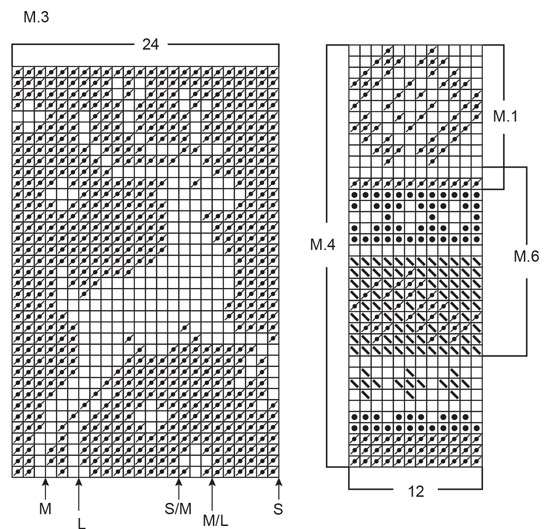
|
|||||||||||||
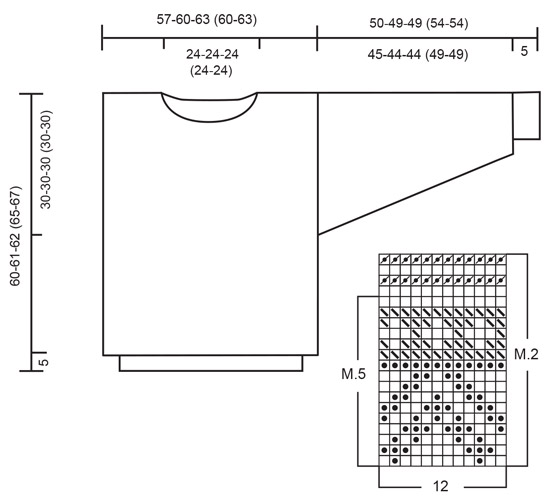
|
|||||||||||||
Have you finished this pattern?Tag your pictures with #dropspattern or submit them to the #dropsfan gallery. Do you need help with this pattern?You'll find 27 tutorial videos, a Comments/Questions area and more by visiting the pattern on garnstudio.com. © 1982-2025 DROPS Design A/S. We reserve all rights. This document, including all its sub-sections, has copyrights. Read more about what you can do with our patterns at the bottom of each pattern on our site. |
|||||||||||||

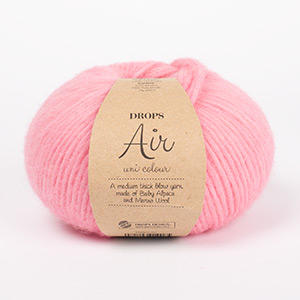





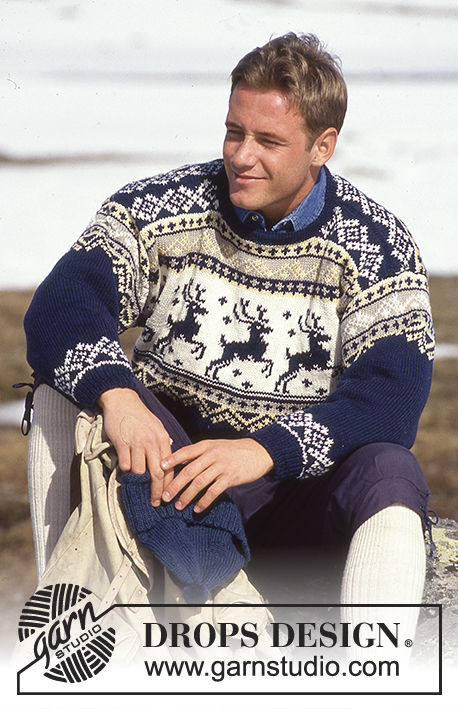
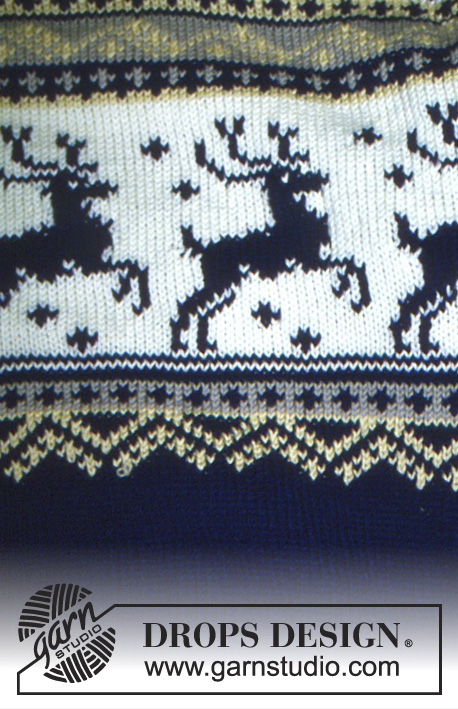


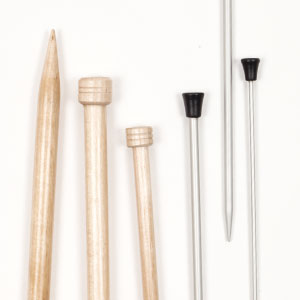
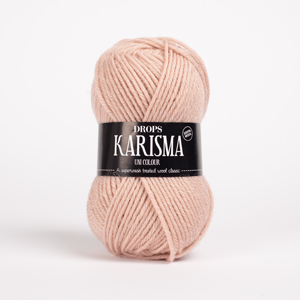
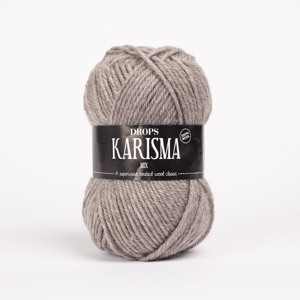
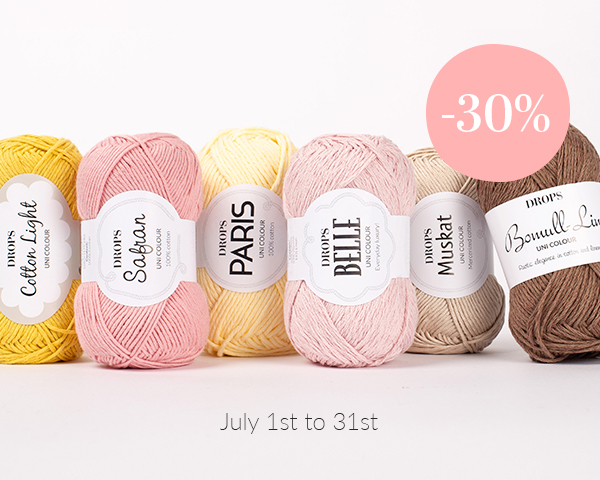
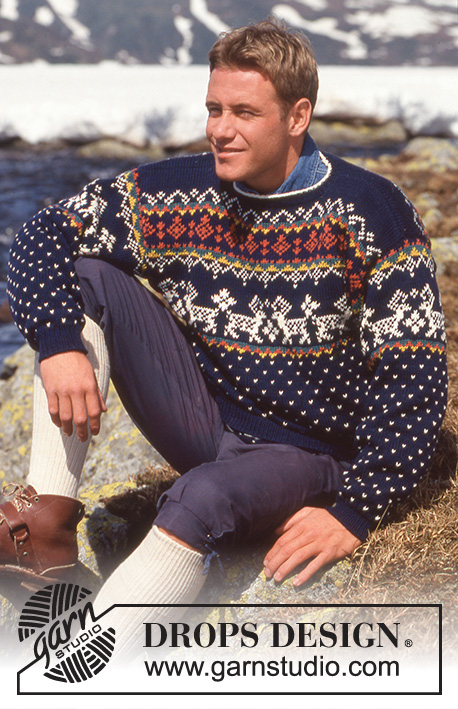
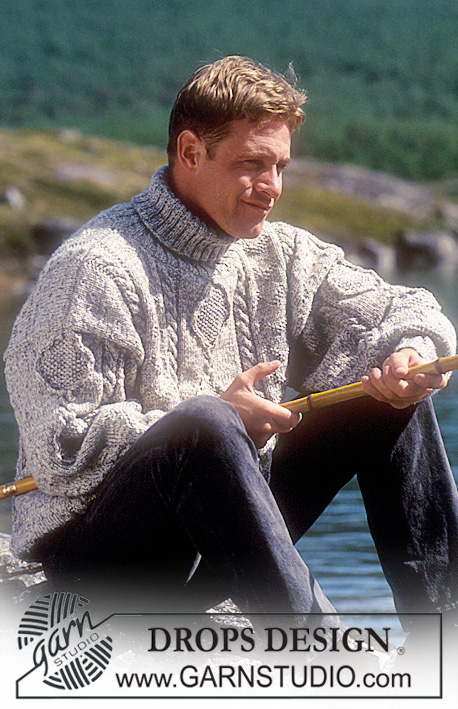

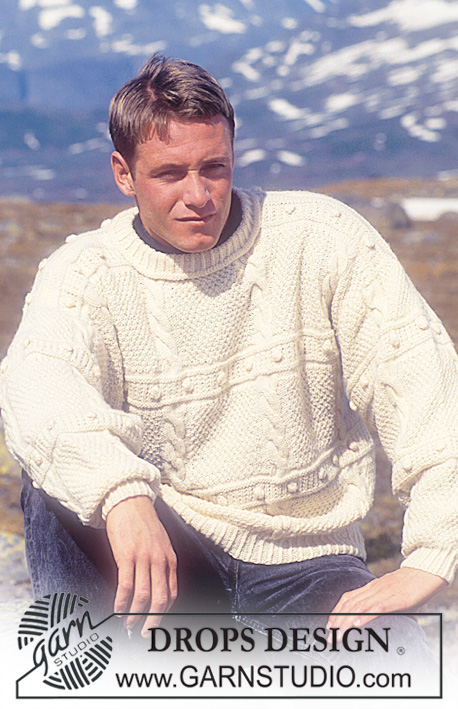
































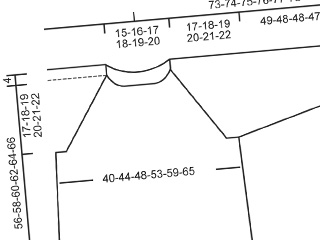
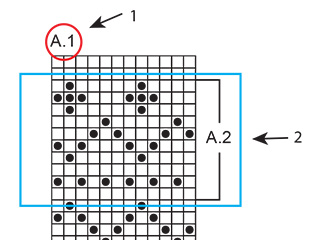
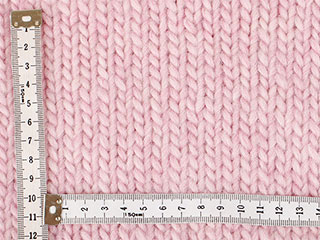
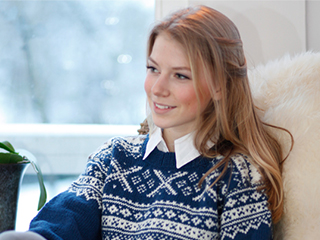
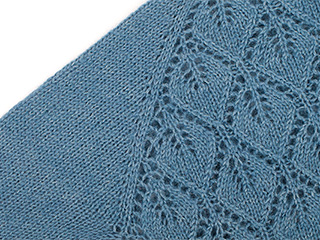
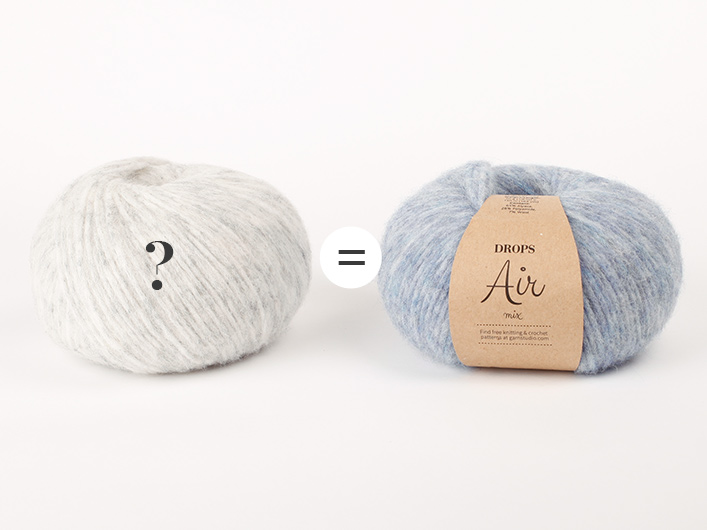
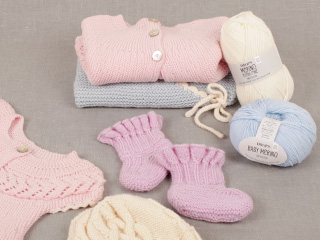
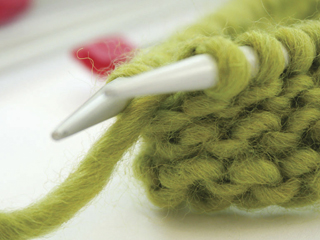
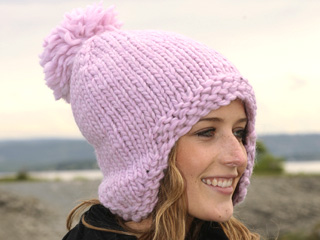
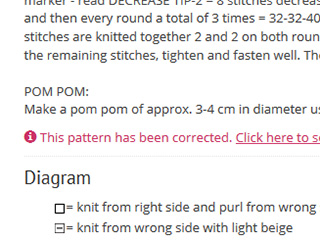
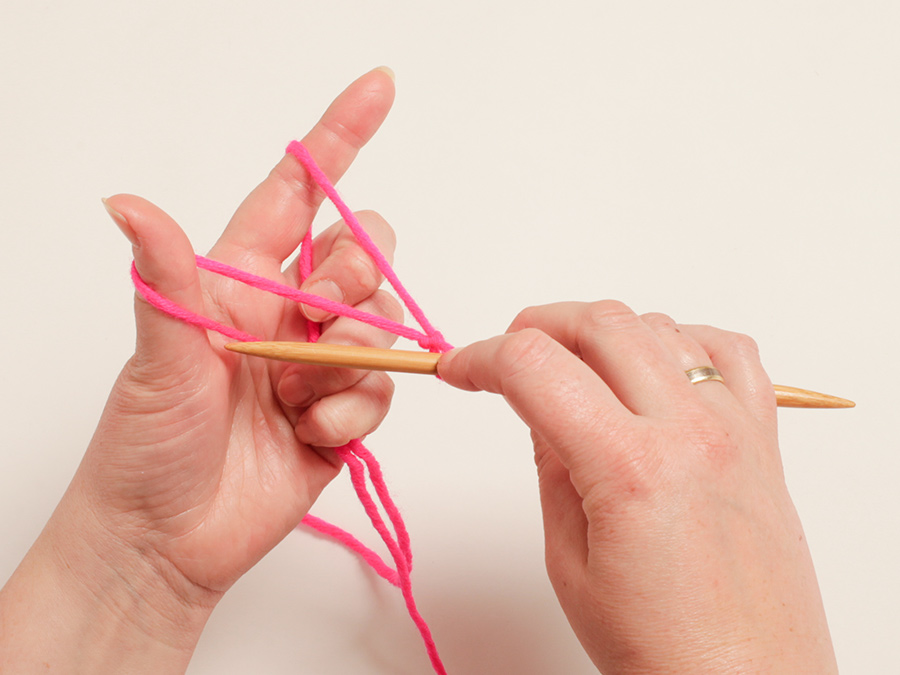
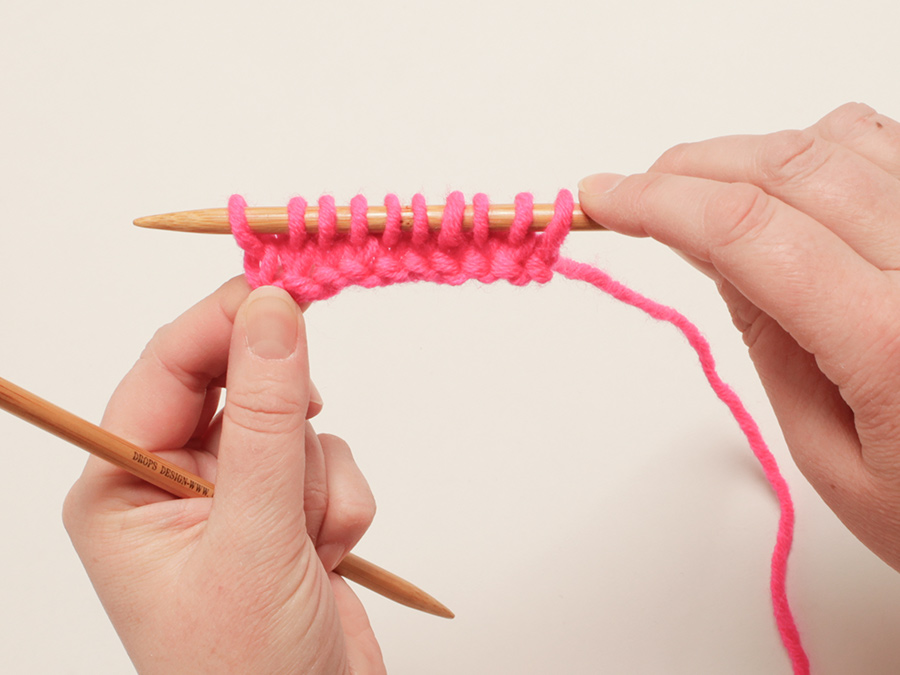
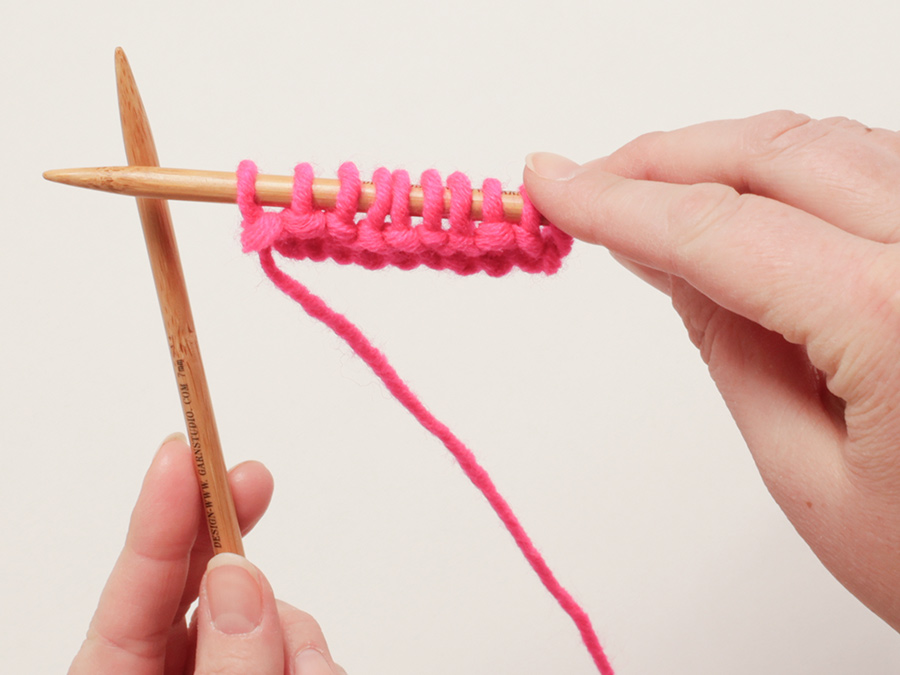
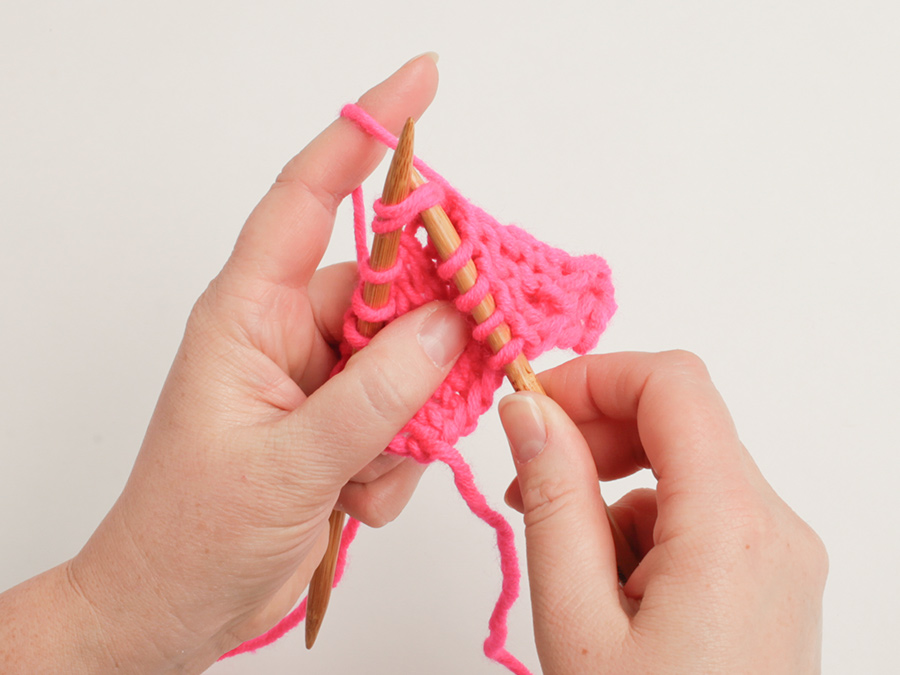
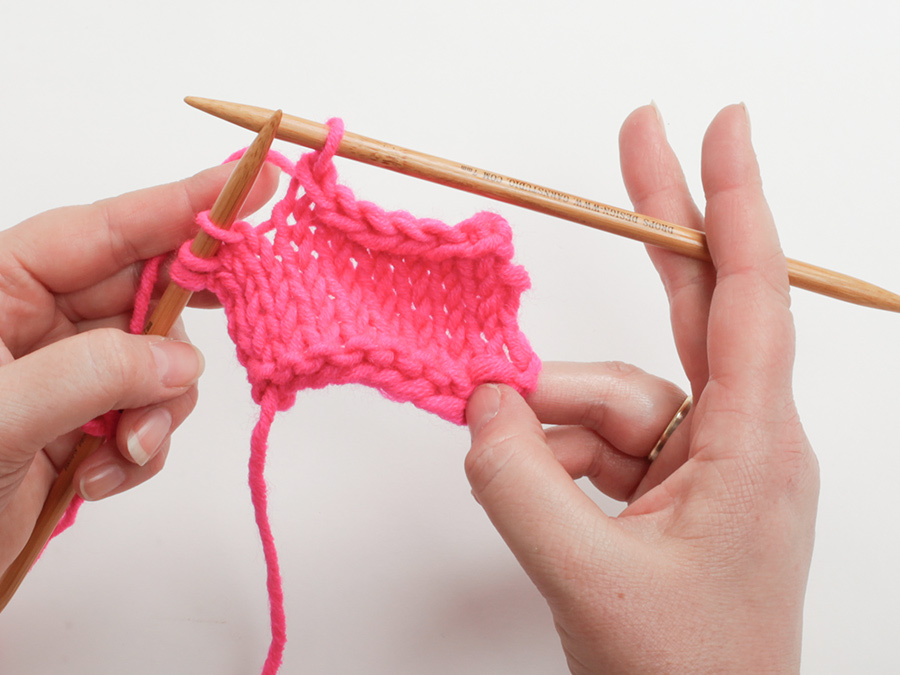
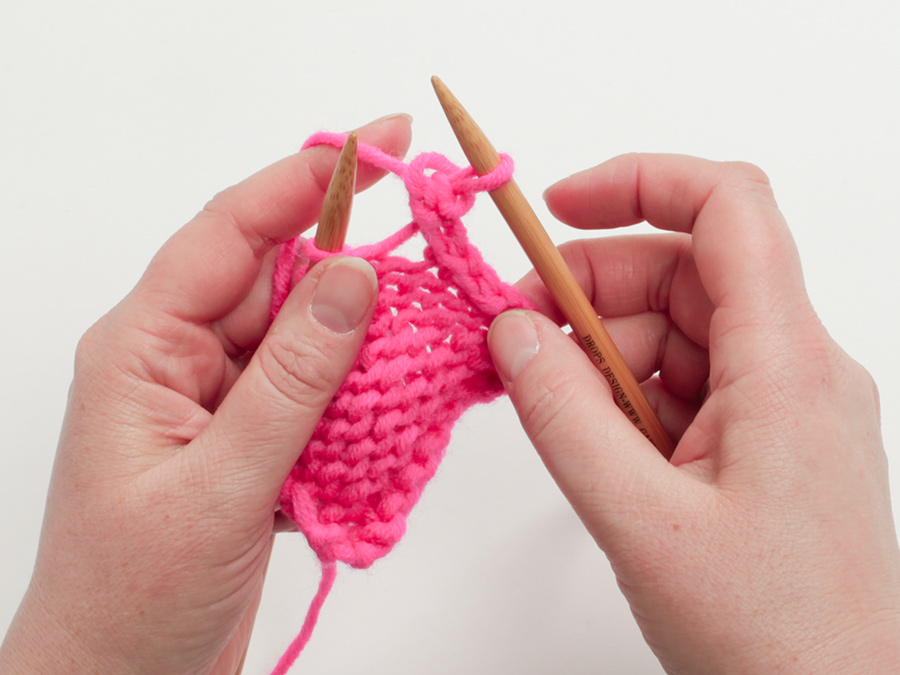
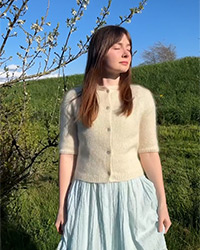
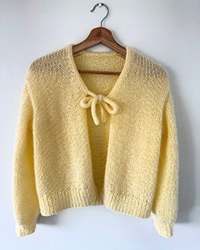
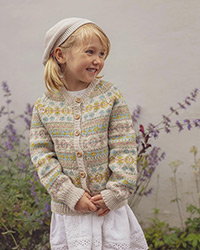
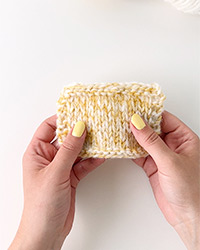
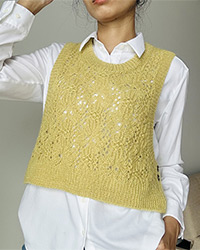
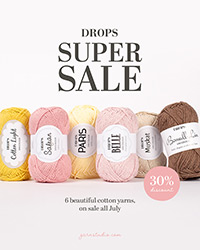
Post a comment to pattern DROPS 32-10
We would love to hear what you have to say about this pattern!
If you want to leave a question, please make sure you select the correct category in the form below, to speed up the answering process. Required fields are marked *.